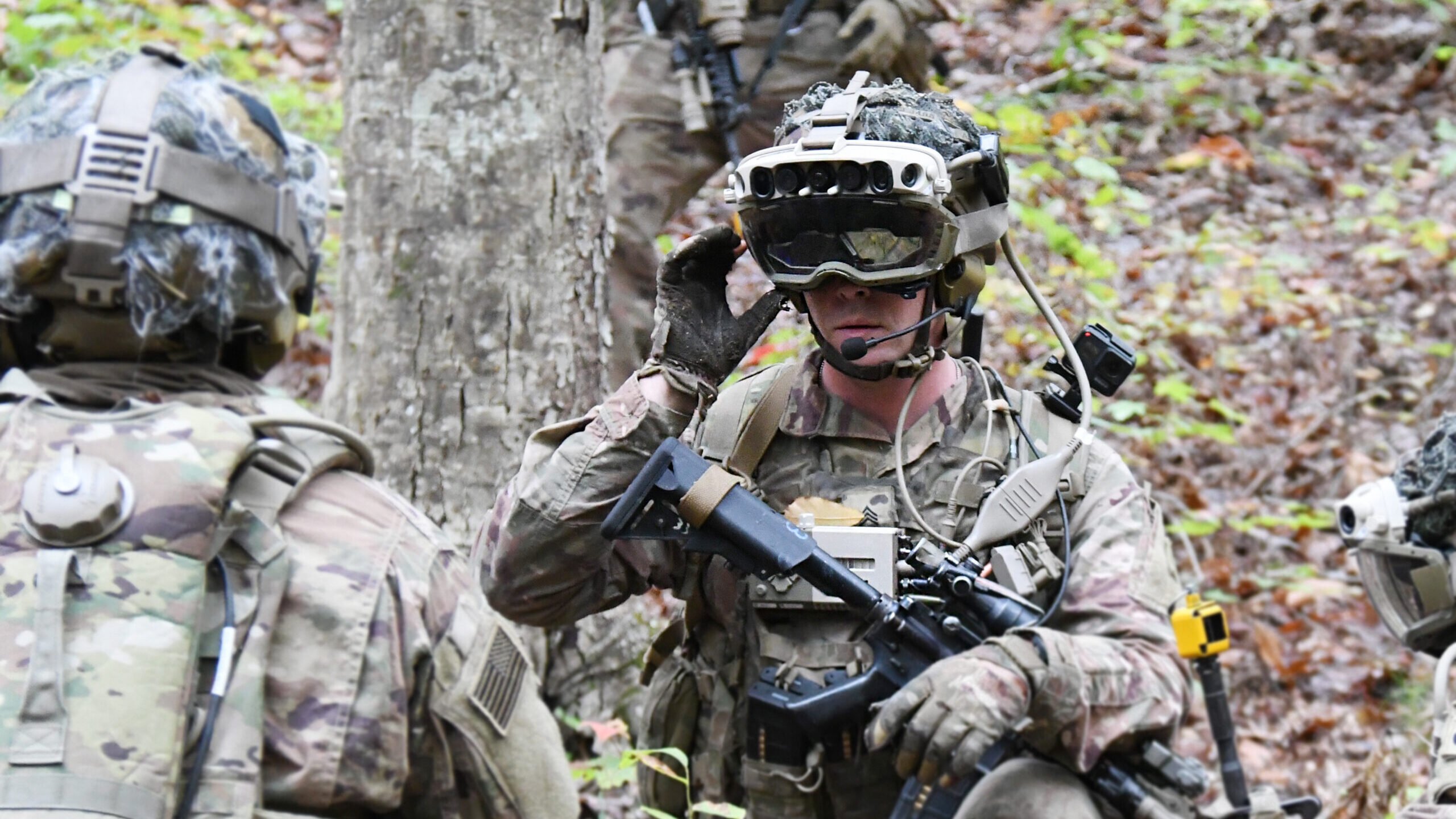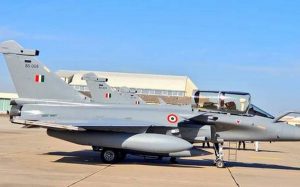The Army is working to address “occlusion” challenges faced by soldiers who use Microsoft’s costly augmented reality system to create and eliminate virtual “enemies” hidden behind real objects.

The Army recently received the new IVAS 1.2 prototype that it will use for a series of tests starting later this month. (US Army)
The US Army is facing a challenge with Microsoft’s Integrated Visual Augmentation System (IVAS) while attempting to use it for mixed-reality training. The issue, known as “dynamic occlusion limitations,” prevents virtual objects, like enemies, from being hidden behind real-world objects. This limitation hampers the effectiveness of training scenarios, especially when soldiers encounter closed doors or windows in the real environment.
The Army received the IVAS 1.2 prototype recently and aims to use it in conjunction with the Squad Immersive Virtual Trainer (SiVT) program. However, the occlusion problem has created difficulties for outdoor and indoor training alike. The Army is striving to develop a device that serves both combat and mixed-reality training, but the occlusion issue poses a significant obstacle.
The SiVT program aims to enable soldiers to train in various combat scenarios, using the IVAS to inject virtual threats into real-world situations. But the technical challenge of occlusion may limit the training’s effectiveness. Army officials acknowledge the complexity of creating a device for both purposes, and the issue remains unsolved, with a potential solution not expected until 2026.

Soldiers from the 82nd Airborne Division used a prototype of the Integrated Visual Augmentation System (IVAS) during a trench clearing exercise in October at Fort Pickett, Va. . (Bridgett Siter/US Army)
The Army and Microsoft are exploring solutions, such as digital twins and improved georeferencing, to mitigate the occlusion problem. Georeferencing is crucial for ensuring the simulated environment accurately represents the real world. Other challenges for IVAS outdoors include handling bright natural light. Nonetheless, IVAS remains useful for other purposes, like marksmanship training and mission planning.
Despite the occlusion issue, the Army remains hopeful that progress will be made by 2026, when the immersive training system is set for fielding. If the problem persists and the SiVT development is shelved, it would be a setback for IVAS, which has already faced developmental challenges. However, the system can still be used for specific training aspects, providing some benefits to soldiers.






